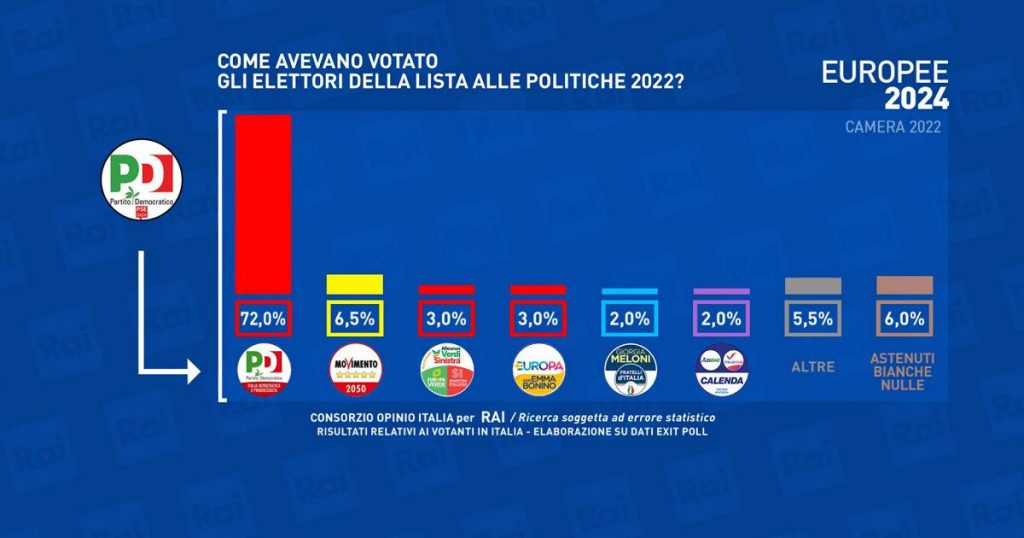The outcome of the recent European elections is already known, but it is worth exploring the dynamics of voting flows, characterized by significant variations in different political areas. The Opinio Italia Consortium has provided Rai with a detailed analysis of the 2024 European election vote and the changes that have emerged in the main Italian political parties compared to the previous 2022 political elections. We asked the Consortium’s president, Livio Gigliuto, to comment on the data emerging from the analysis and synthesized in the graphics prepared by the researchers.
The first certainty from the June 8th and 9th vote is that Fratelli d’Italia was the top party in almost all age groups of voters. However, it is striking that, in the age group of voters between 18 and 34, the Democratic Party was the most voted for, with FdI coming in second. In the youth group, in addition to the PD and FdI, the M5s also positioned relatively well. The real surprise, however, is the fourth place achieved by Alliance Green Left, which, thanks to the votes of the younger voters, experienced a real breakthrough. AVS, in fact, ranks sixth in all other age groups of voters, but rises to fourth place among the youth. The Fratoianni party did particularly well in the European elections because it captured the youth vote on the issues of war and pacifism.
In terms of territorial voting and voter loyalty, FdI appears to be one of the most cross-cutting parties, obtaining good results throughout the country. The Meloni party managed to win votes across Italy and therefore did not depend on fluctuations in turnout in various areas or regions. FdI increased its share by collecting most of the votes from its traditional voters and taking some from the center-right allies, FI and Lega. The Lega had a lower loyalty rate from its pool of voters, but in turn took some votes from FdI. The candidacy of General Vannacci had a significant influence on this shift. Perceived as a right-wing man, he could over time change the morphology of the Lega and make it less territorial and more right-leaning.
The 5 Star Movement is perhaps the party that suffered the most significant drop in votes. It was voted for by the voters who had already chosen it in 2022, but it suffered a hemorrhage of preferences – particularly on the issue of peace – which partly went to Alliance Green Left and partly to the PD. The success of the Democratic Party is due to the consensus of voters on the polarizing campaign led by Secretary Elly Schlein. Capturing public opinion by proposing a constant narrative in opposition to that of the government, “those who do not agree with the government must vote for the PD,” has catalyzed votes and strengthened the party.
Forza Italia collected a large portion of votes from its existing voters and regained some centrist and moderate votes that had been dispersed over time. The merger with “Noi Moderati” was important in this regard. Action and United States of Europe both remain below the 4% threshold, and none of the candidates from the two coalitions will enter the European Parliament. In the 2022 elections, the two parties were together in a single formation. Calenda received a higher percentage of votes, but overall the United States of Europe, having united two parties, received more preferences. Most of the endorsements went to Emma Bonino (More Europe), who entered the coalition.


